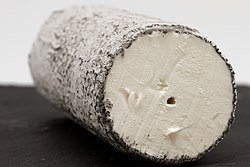HOW Facial Products Using Cultured Goat Milk Products Benefits YOU?
Facials provide a number of benefits for your skin, depending upon the ingredients used. They can help stimulate the skin and increase circulation, help prevent wrinkles, and tone and moisturize skin. Alternatively, help remove excess oils.
Skin is classified as the largest organ of the body, and as such, requires nourishment just like our internal organs. While the food we eat provides nutrients for the skin, as well as the rest of the body, our skin also has the ability to absorb substances directly.
Homemade facials are a great way to pamper yourself and your skin without the high price of a spa. Facials can range from the application of a single ingredient, to complex combinations of ingredients applied in sequence. As goat milk is rich in protein, fat, vitamins and minerals, therefore, it is just as healthy for you on the outside as it is on the inside.
The cultured goat milk products, like yogurt, sour cream and buttermilk, have the added benefit of lactic acid, which is one of the Alpha hydroxy acids (AHAs) that are found in many commercial beauty and anti-aging creams and lotions. Alpha hydroxy acids help remove the dead surface-layer skin cells, revealing newer, younger-looking cells and its ability to combat acne. AHAs have been used for centuries for skin rejuvenation.
Learn How To Make Cultured Goat Milk Facials
Why make facial product?
While you are soaking in that bath, you can simultaneously be rejuvenating your face with a homemade goat milk facial!
What is the best part about making your own facial products? They are inexpensive, and they actually work!
The 3 facial recipes below all include yogurt, a great nourishing and moisturizing agent. For all the recipes below, blend all ingredients thoroughly. Using a food processor or blender will ensure a smooth mixture.
Goat Milk Yogurt Facial Recipe #1
This one really moisturizes, and leaves skin super soft.
- 1 Tablespoon. Goat milk yogurt
- 1 Tablespoon. Honey
- enough Corn starch to thicken
Goat Milk Yogurt Facial Recipe #2
The oatmeal in this recipe helps dry excess oils, while the yogurt and honey nourish and moisturize. It is best to blend the oatmeal in a food processor or blender first – before cooking, to make the particles smaller.
- 2 Tablespoons. Cooked Oatmeal
- 1-2 Tablespoon. Goat milk yogurt
- 1 Tablespoon. Honey
Goat Milk Yogurt Facial Recipe #3
Cucumber makes this recipe cool and refreshing, and leaves skin feeling smooth, clean and toned.
- 1/2 of a small cucumber, seeded
- 1/2 cup goat yogurt
- 1-2 tsp. goat milk powder to thicken
Dry Goat Milk Facial Recipe
Why make Dry goat milk facial?
The facial recipe below utilizes only two simple ingredients to get you started.
Powdered goat milk makes it easier to get a thick paste in this facial, and the use of buttermilk for the liquid gives you the benefit of alpha-hydroxy acids (AHAs) for smoother skin.
- 1/2 cup Powdered Goat Milk
- enough Buttermilk to make a paste
For all facials, start with freshly cleansed skin. Then, apply a very warm, moist cloth to the face for a few minutes to open the pores. Apply the facial mixture and leave on for 10-20 minutes. Wash off gently with a warm, wet cloth. Finally, rinse with cool water to close the pores and help retain the nourishing benefits of the facial ingredients.
After you have try these recipes, experiment on your own to find combination that work best for your skin.
*More Suggestions:
Experimenting with homemade facials is a lot of fun, and no doubt you will find original combination that are even better than these. So, get off the beaten path, and make your own recipes! Here are a few more ideas to fuel your thoughts.
- Sour cream can usually be substituted for yogurt. When trying this, reduce the amount of thickeners, such as corn starch or powdered milk, as the sour cream is usually a good bit thicker than yogurt.
- Most fruits make great additions to facials. Pineapple, papaya, bananas and grapes are commonly used. Orange juice and lemon juice contain vitamin C, but use carefully, as these may irritate some skin types.
- Add in crushed fresh herbs, like peppermint, catnip, or chamomile, or use tea from the herbs as the liquid portion of the facial.
Want more fun DIY Facial Product? Check out our other goat milk facial post.



